SLC-S25/W4 | Community World Tour : Folk Costumes and Arts
I can remember going for cultural day when I was in grade 8. It was 10 years old then. The group I belonged to demanded that I wear Efik attire. This required that I wear a native cap, chieftaincy shirt and a wrapper around my waist with a staff to do finishing work. An Ibibio or Efik man can't be fully dressed without his staff. This is what we call costumes. Costumes changed me to a titled chief, which I was addressed as. This week is talking about folk costumes and arts, and I've picked two clues to deliberate on, which are
Day in Costume
Make a short video (2–3 min) where someone wears a traditional outfit for a normal day. How does the world react? Include brief reflections or street interviews if possible.
Fashion Fusion
Create a cross-cultural costume concept by mixing traditional elements from two or more cultures. You can illustrate it, wear it, or describe it visually. Explain your creative choices.
If there's anything I love wearing, it's traditional costumes because one is unique and respected by such. I'll be sharing narratives in this. Let me start with the second clue before talking about the first.
Creativity & Cultural Value |
|---|
The creativity I adopted for this fashion fusion is that of the trending transition seen on TikTok, where one changes looks from his normal to a stunning look, usually covered with expensive clothes, refined looks, makeup and the likes. It's a transformation of the human person. So it's this transformation in transition I did for this fashion fusion. I'm a traditional man, and I love it when people dress in their native attire.
I can recall going to an exam hall with a cultural display. From the road to the exam venue were shared praises and commendations of different kinds. You need to see how people looked at me in awe. Culture drives people crazy, and you're easily identified by this. Let me share the first cultural display I made for my fashion fuse. It's the Yoruba culture. Don't worry; I'll tell you more about this culture.
Yoruba Traditional Elements
A typical Yoruba man is one identified with a Fila which is the name of the type of cap used in this culture. The head cap is usually folded and made to sleep on one side while the body of the cap is made to stand upright. Any Yoruba man that's fully dressed can't go without his Fila. Another notable element is the neck beads.
This may not be necessary, as anyone can go out without these beads. The major element in their tradition for me is the Agbada sewn with an embroidery and worn with a full senator. The outfit balances when the fila is worn, as without it, you can't identify a Yoruba man. The Agbada is a common type of cultural wear for men in this tribe, and we usually address them as Aboki. They have some other dress sense with cultural inclination. I did a transition with this cultural attire and wore two neck beads to beautify the material.
 | 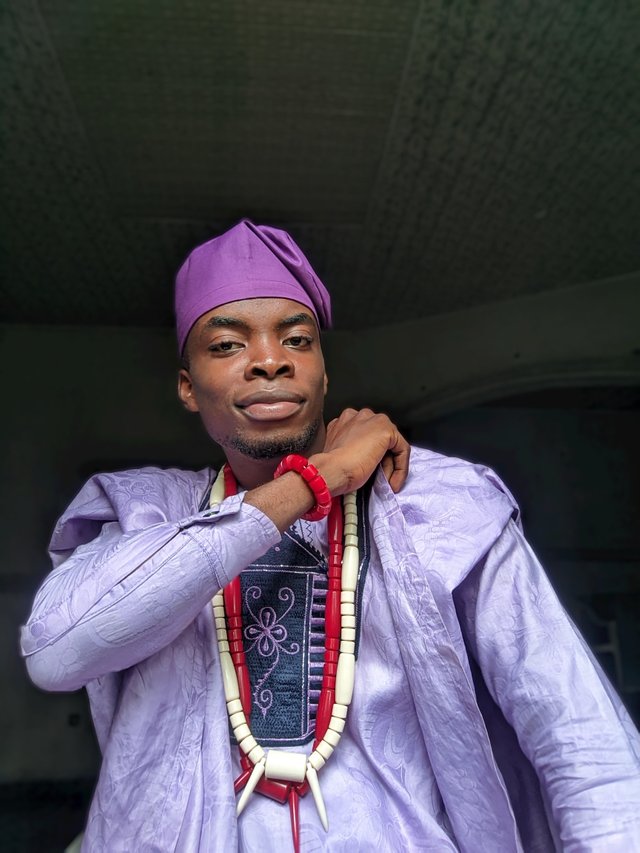 |
|---|
I wore a red and white bead with a purple Agbada and purple fila. The second culture I fused in my video is that of German culture. I did a cross-cultural costume of three cultures. This is the second one, and it's international, not within range of my country, and not a known cultural costume or traditional element display in my country.
German Traditional Elements and costumes
This is not a culture I'm familiar with, but I did research on the culture and read through their culture and tradition, including their cultural attire for men and women. I'm a man and can't dress in German attire for women. In most American movies I watch, I see men dress in German culture, and this is what defines them. They are easily identified by a couple of clothing elements and embroidery patterns. Their dress is as complicated as on the inside but looks simple on the outside.
A real German man is known for his round hat. That's what identifies a real German man. The hat must always be round with a protruded vertical top. It makes more sense when there's a staff held for important events. Just imagine holding the staff for support and then bending with your hand, stretching the cap to your side.
 | 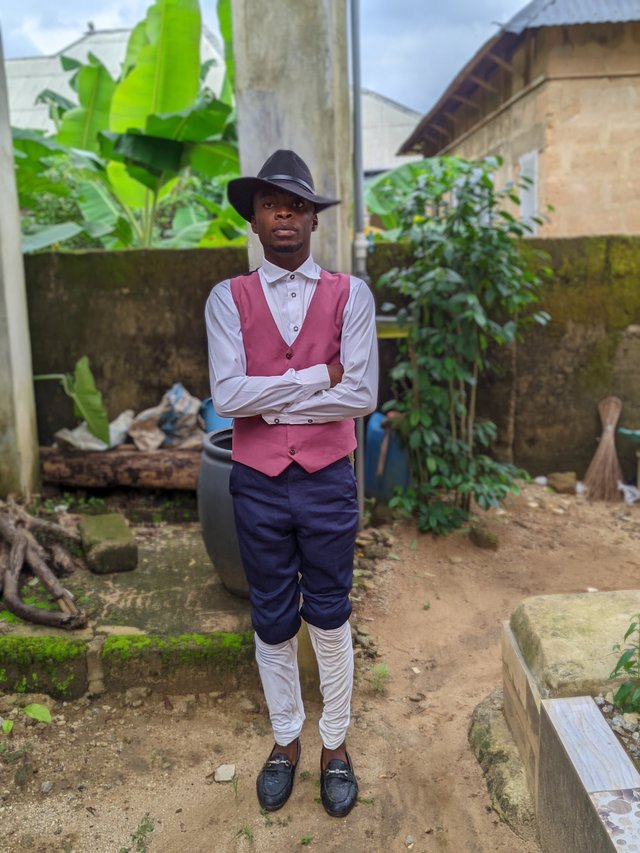 |
|---|
A shirt is worn; it can be white or any colour but is mostly white and milky with a jacket and three-quarter trousers. It doesn't end with this, as any English man can wear this. The difference is in the leg wears worn, and it's mostly white in colour, as if it's a joker wearing it. This distinguishes an English man from a German. Most English men can't wear three-quarter trousers with a shirt and half jacket as corporate wear. This is a cultural element for the German men.
Ibibio culture
This culture is a known culture for Akwa Ibomites. You recognise an Akwa Ibomite by the chieftaincy shirt and cap they wear. In Akwa Ibom, we have different cultures with different attires. So the one I'll be specifying is the Ibibio culture.
Staff
Neck and hand heads
Wrapper
Chieftaincy Shirt
Native Cap
 |  |
|---|
These are the traditional elements in Ibibio culture. This is our costume, and I wore it to signify my culture and protect my cultural heritage. I wore a native cap that's black with a small pony in its middle. I also wore a chieftaincy shirt and wrapper with a black shoe and staff. Hanging around my neck are neck beads, red and milky with a red hand bead.
This dress signifies Ibibio and Ibibio Isongo. The cultural base attached to these costumes is that the beads worn on the neck are usually worn for protection, and if you notice, we have horns on the beads which signifies cow horns used to drink palm wine and bless kinsmen. The historical story of this traditional costume and its origin would be staged in the next link.
Make a short video (2–3 min) where someone wears a traditional outfit for a normal day. How does the world react? Include brief reflections or street interviews if possible.
This is the first clue. I wore this traditional outfit to an exam and two traditional marriages. It's the Ibibio culture I wore for these three occasions. The one I wore for my first examination caused reactions among students and teachers. On seeing me that morning, everyone was like, Damn.... Period... You're truly the son of the soul.
The other marriages I went to also caused serious reactions among villagers. Some said I don't look like a real native man and that I was just wearing a typical covering. Their reason was because my face looked English, but I shocked them with my dance. That was when they believed and begged my pardon for the insolent words at the onset. Can a non-indigene dance like this? These aren't the moves of an English man. They gave me money for compensation.
Costume or Art Story History, use, or symbolism |
|---|
The origin of this traditional costume for the Germans started back in the 18th century, and it was worn by peasants in the regions of Austria and Switzerland. It's called the lederhosen. This name is used to describe the trouser attire as it began to appear and be withinfestivals during the 19th century when nationalism grew in Europe. It's mostly seen in national celebrations like Oktoberfest. That's how it's called, and you see the German men come out in their hard white shirts and Lederhosen made from tanned leather.
| Costume | Texture | Symbolism |
|---|---|---|
| Hard, white shirt | Cotton or linen that's hard with embroidery in front | This makes the dressing formal and signifies a sense of pride for cultural attire. |
| Lederhosen | Tanned leather, sewn to stop just below the knee. It can be worn with suspenders or a belt. | Worn during folk festivals to symbolise masculinity, hard work and nature since goat skin is used in sewing. |
| Haferlschuhe | Black or brown shoes made of leather | Work and simplicity |
| Kniebundstrümpfe | Wooden socks that is white and knitted. | symbolising purity while the embroidery signifies a village or clan. |
Yoruba
The Yorùbá traditional attire called Buba ana Agbada is usually worn by men in West Africa as a symbolism for their tradition and cultural heritage. In this culture, clothing is not just about how it appears. Clothing speaks, sends information and symbolises responsibility on the part of the man involved. Dressing in such a costume is during marriages and chieftaincy title appointments. If you notice, most Yoruba men wear this clothing for their traditional marriage with the fila cap to complement the dressing. It has traditional ties to it and is customary.
If you don't wear this during your traditional marriage, it means you're not responsible and capable of marrying their daughter. Even with this complicated dressing, you must prostrate to show your level of respect for the family. It started in the 19th century when Nigeria had a division of ethnic groups, the three major are; igbo, Yoruba and Hausa.
| Costume | Texture | Symbolism |
|---|---|---|
| Buba | long-sleeved top that covers the body from the inside, made of cotton or silk | Representing responsibility and strength. |
| Sokoto | Trouser worn underneath the Buba and usually made from the same fabric to match. | Adding colour and Steeze to the Buba |
| Agbada | A gown that covers the bubs and Sokoto, worn over the Buba with a perfect embroidery of a village or clan. Without the embroidery, the Agbada can't be called an Agbada | Use to signify protection of the embroidery which is the village or clan or cultural heritage. |
| Fila | Can be long and folded slightly or have pointed flaps. | Symbolises respect and affluence. |
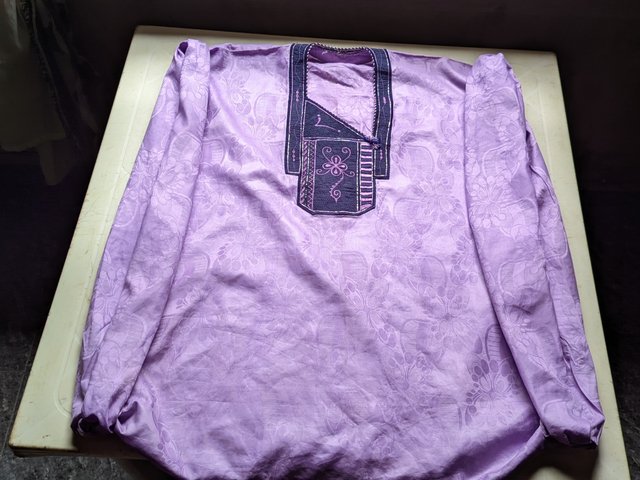 | 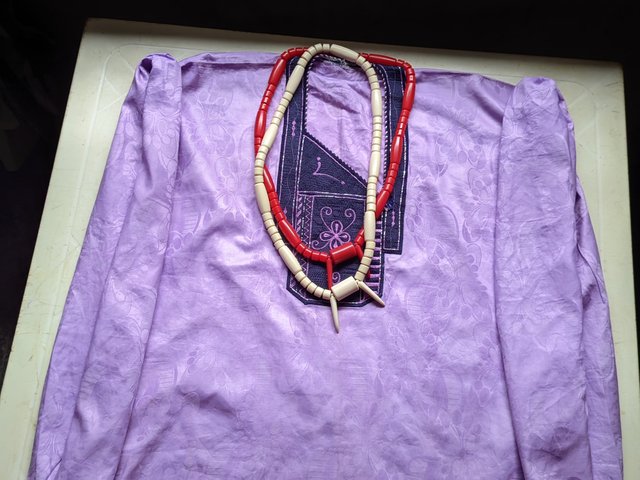 |
|---|
Ibibio culture
Its origin is the same as the Yoruba. The only difference is in the symbolism, as we do make use of what we call masquerades here, and there are some spiritual connections which bring about the neck beads. I'll explain.
| Costume | Texture | Symbolism |
|---|---|---|
| Chieftaincy Shirt | Cotton or silk | Used to signify purity in the land. |
| Usubo | Tied around the waist and DN be shy fabric | Used mostly for traditional dances, as those who dance during rituals make use of wrappers. |
| Working stick | Long black aluminium material. Can be in any shape. | Used by titled men or dancers in a marriage ceremony. |
| Neck bead | Usually made with red or white beads | Used for protection and spiritual authority. |
| Titled chief's Cap | Usually in black or black and red | Respect and authority |
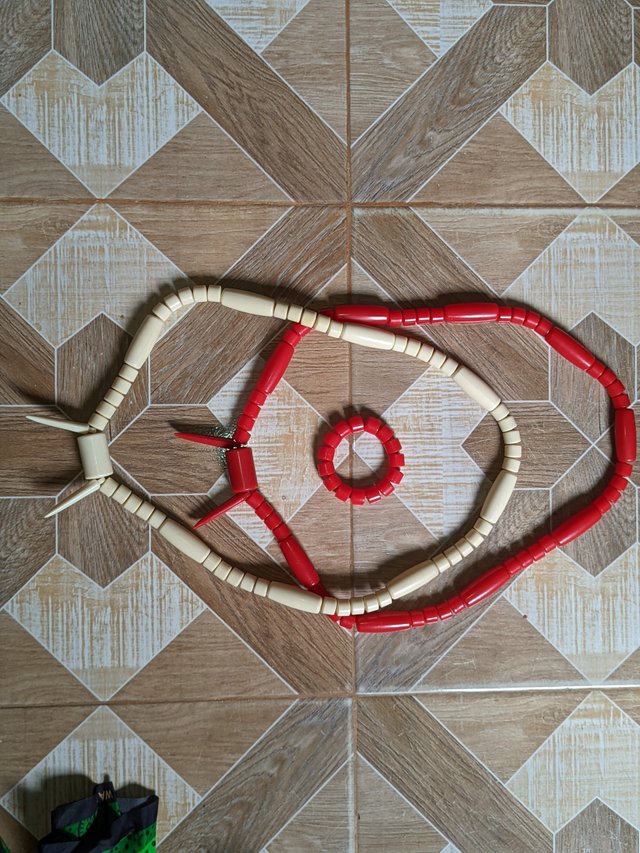 Neck bead Neck bead | 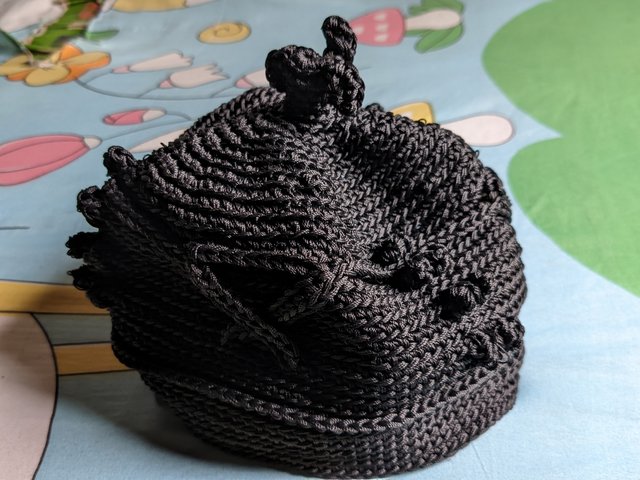 Titled chief's Cap Titled chief's Cap | 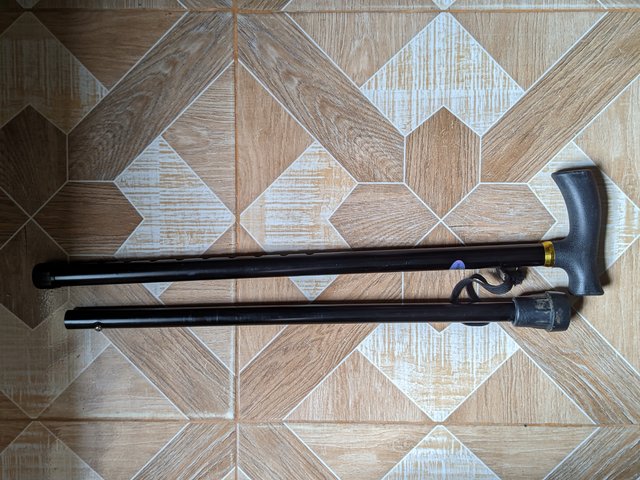 Working stick Working stick |
|---|---|---|
 Neck usubo Neck usubo |  Set Set |  Usubo Usubo |
Location + Steem-atlas |
|---|
I wore these costumes in my house and my house is located at this point on the steem-atlas map.
| Google Maps | Steem-atlas — [//]:# (!steematlas 4.96859237 lat 7.98572212 long Bossj23 Residence d3scr) |
|---|
TYPE LESS SMILE MORE Phrase |
|---|
When my village bows when I dance in my native attire owning up the misconceptions that I'm more English than native. How do you differentiate an English man from a native man when they are both wearing native attires? They way they dance and speak 🤣🤣
Cc,
@kouba01
I invite @basil20, @alejos7even and @edgargonzalez
Posted with Speem
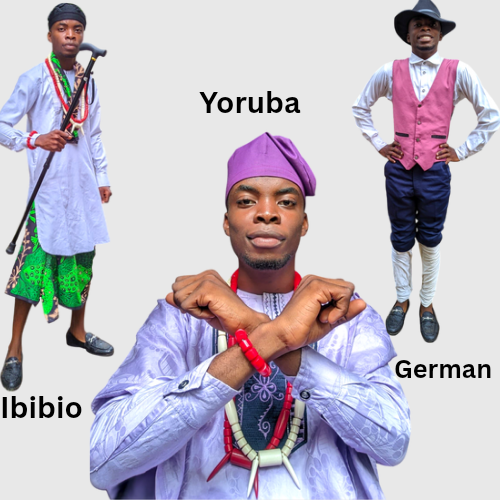
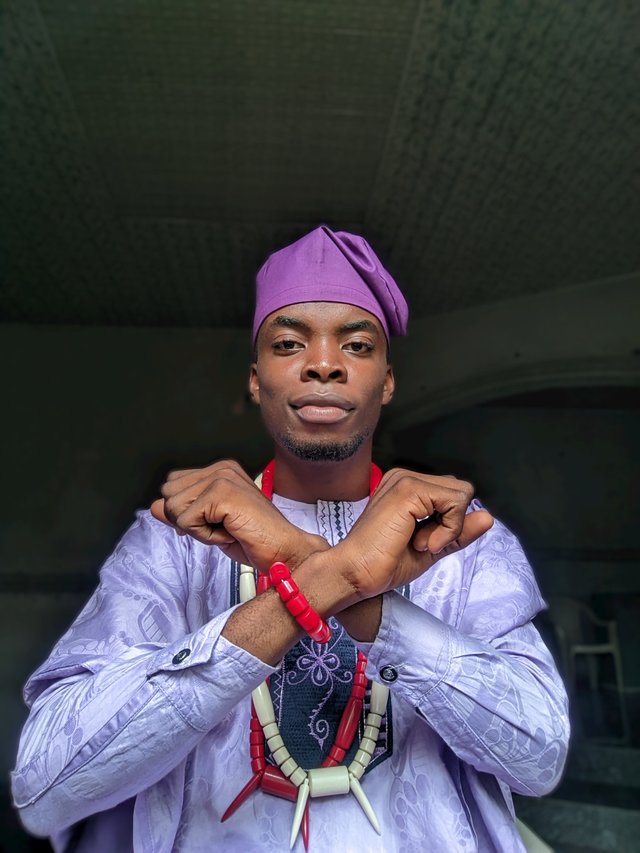


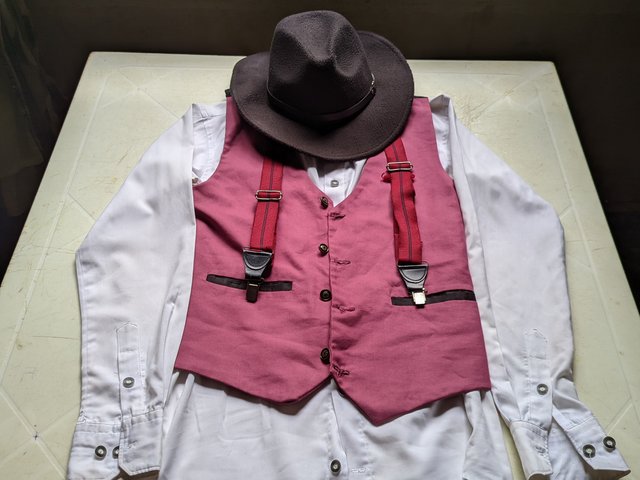
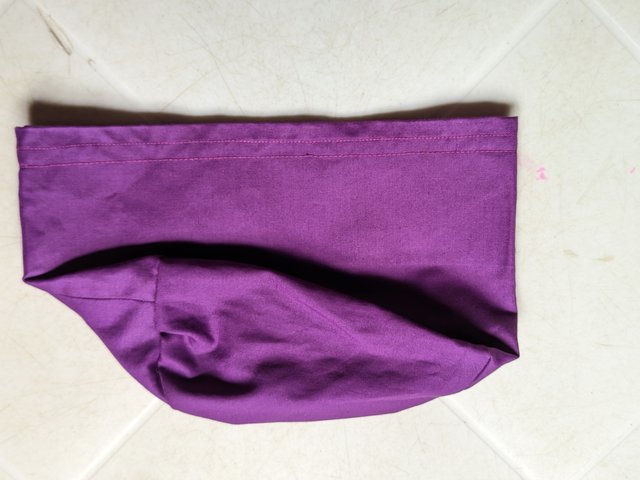
Thank you for your participation in Community World Tour – Week 4: Folk Costumes and Arts. Based on the official evaluation rubric, here is a detailed and fair assessment of the post by @bossj23, which explores multiple cultural layers through attire, transitions, and vibrant personal anecdotes:
Evaluation Summary
Final Score: 10.0 / 10
Remarks:
This entry is both informative and entertaining, blending humor with cultural pride and precise historical knowledge. The storytelling is personal and immersive, offering readers an engaging journey through Nigerian and German attire. The effort put into transitions, research, and interaction is remarkable.
Thank you for this colorful and spirited contribution to the Community World Tour!
— Community World Tour Jury
Appreciated Sir. Thanks for the review
Want to grow faster on Steemit? Try www.pussteem.com – the first platform that lets you use $PUSS tokens to power up your posts. For just $0.50, you can receive $10 worth of upvotes through our curated support system.
➤ Learn more: Unlock the Power of Your Steemit Journey
➤ Step-by-step guide: How to Get Started -Video Tutorial
Join the movement – boost your visibility, earn more, and grow with Pussteem!
:globe_with_meridians: https://pussteem.com
Join with us on Discord: https://discord.gg/g4KWCtFJbk
https://x.com/bossj23Mod/status/1942743894111780947?t=C2BElHsZz-XqES7F7SllQA&s=19
This is really a detailed post, wow!
I like how you took your time to explain every item in the costume and how your post is well arranged, i know about the yoruba costume alot because i am from there, a little about the Ibibio and finding out alot about german wears.
Does the beards have to be white and orange all the time?
This is an educative post and it was worth my time.
Thank you.
Thanks for the commendation. I think I spoke about your culture. Most songs that's trending in Nigeria are featured in Yoruba culture and the costumes worn by men don't look bad, but at the same time I wonder how men prostrate with this. The beads must be white and red all the time to signify purity and blood of the unborn and born.
That's interesting, Yoruba to the world.
It's weird to see you wear all that and prostrate, yeah?
lol but that's one of the amazing things about our culture, it's a respectful one and regardless of the costume you have to dobale.
Sharp. You've spoken a word I yearn to hear for hours now. Thanks for the answer. This challenge is open to you ma 😁 you have a beautiful voice from the video I watched.
https://steemit.com/steem-kids-parents/@bossj23/the-voice-of-steemit-25-singing-competition-edition-1-blind-auditioning-stage
hahahahha, i will surely make my entry but forget i no get beautiful voice oh but the contest is open for all so i will surely try it.
Thank you.
Is the one you used in your video background voice? If it's not background voice, then the voice is beautiful and cool. No whining. You even sing in Gospel shows.......
Hahahaha
Ok, lets see
This post deserves an applaud, it's well detailed and above all you had a really good time too.
Your post is educative featuring the different tribes in Nigeria, their attire and they're culture and way of life. Not only did you single handily share the different tribes with us you also gave us a detailed experience on how it felt becoming one of them. Thanks for sharing this wonderful post with us and I can't wait to see what your up to next.
Thanks a lot for the commendation and appraisal made on my post. I just felt deep into the writing as I love anything cultural and traditional. It defines who we are and makes our presence even more unique. Just imagine going for a national conference for cultural display and all tribes of selected people are to be there. Who do you think will steal the show? Anyways, what's your culture?
Am a typical Igbo man
Anyways all culture have their feature which makes them unique and different but who I think will steal the show would be the akwa ibom for the women and the igbos for the men. That's my thought on that.
Sharp. You had my thoughts. Anyways, there's a competition just for you. Don't doubt yourself 😁....
https://steemit.com/steem-kids-parents/@bossj23/the-voice-of-steemit-25-singing-competition-edition-1-blind-auditioning-stage
Wonderful presentation, you rock on this Yourba attire, you have described all the costumes just as it is ,but do you know the outfit I love most? The ibibo own is the most adorable. Good luck.
We Ibibio men and women don't joke with cultural display. We always want to look outstanding that's why I feel Ibibio culture has the largest number of costumes. Thanks for the commendation
Hello friend
In Yoruba culture that you are sharing I really like elements of neck beads you have weared as well German culture is also followed in your tradition and these cultures following in your area are great fusion of fashion.
I am inspired by your fashion content
Stay blessed
প্রতিটা দেশে এই মেয়েদের পাশাপাশি ছেলেদেরও সংস্কৃতি পোশাক রয়েছে। আপনাদের দেশের সংস্কৃতির এই পোশাকটি সত্যিই অসাধারণ। ভিডিওতে আপনার পারফরম্যান্স দুর্দান্ত। আপনার জন্য শুভকামনা রইল।
Seriously?? Wow. Thanks for the spotlight. It's just that Nigerians will always be Nigerians. We love standing out and when it comes to culture, we carry it with our head and keep our shoulders up high. Thanks for the commendation. Which tribe do you like?
Hello amigo.
Wow Me encantó tu presentación, está súper informativa con todo lo que nos compartes en detalle sobre estos trajes típicos de tu región. Además que tu video agregando estas transiciones quedó genial y está muy de moda je je je je 10/10 para ti por tu creatividad.
Mucha suerte pero creo que deberías ser un ganador de este concurso. Éxito
Thanks so much for going through all these and commending me for my creativity. It's not been easy trying to make a post stand out but trust the process.....